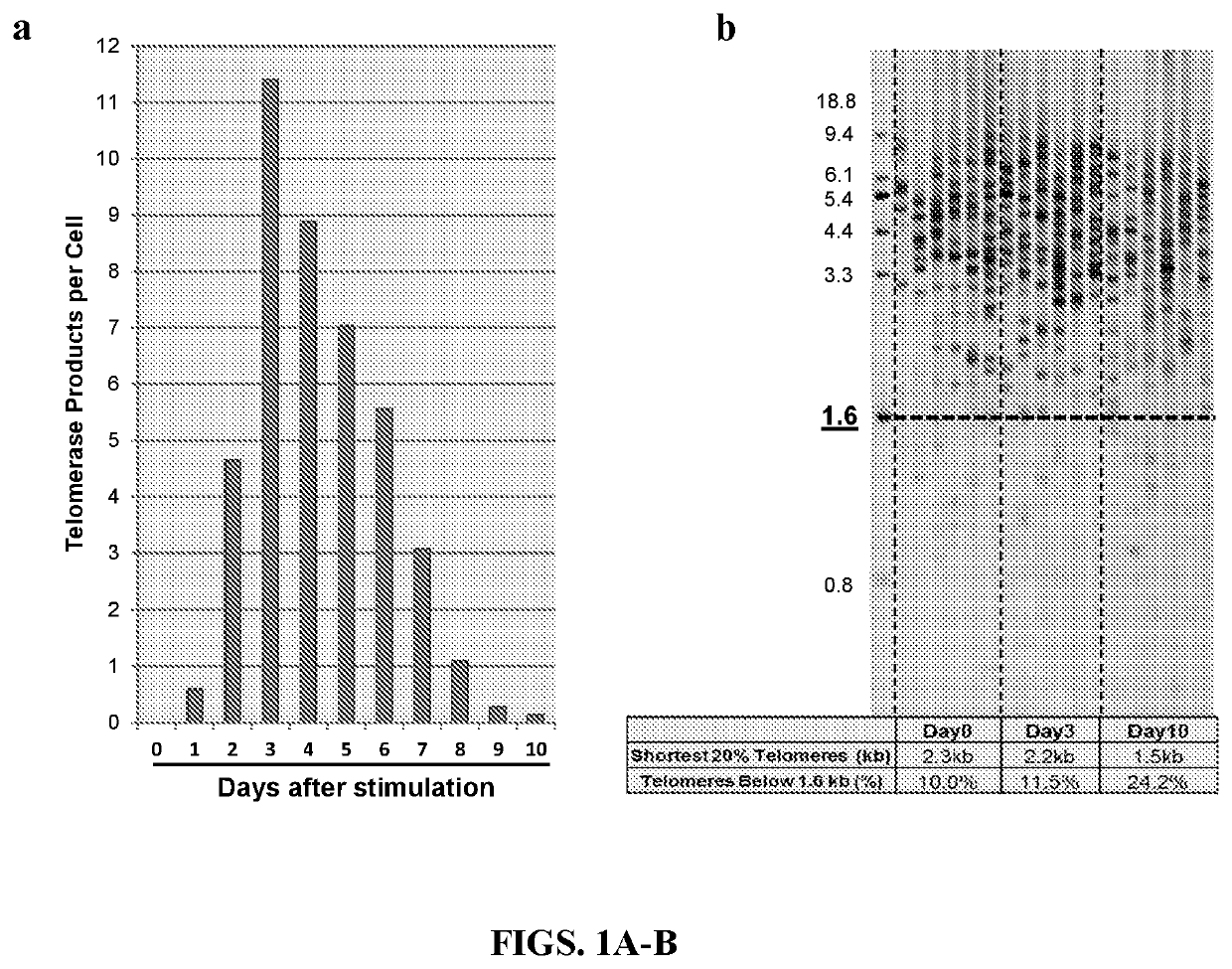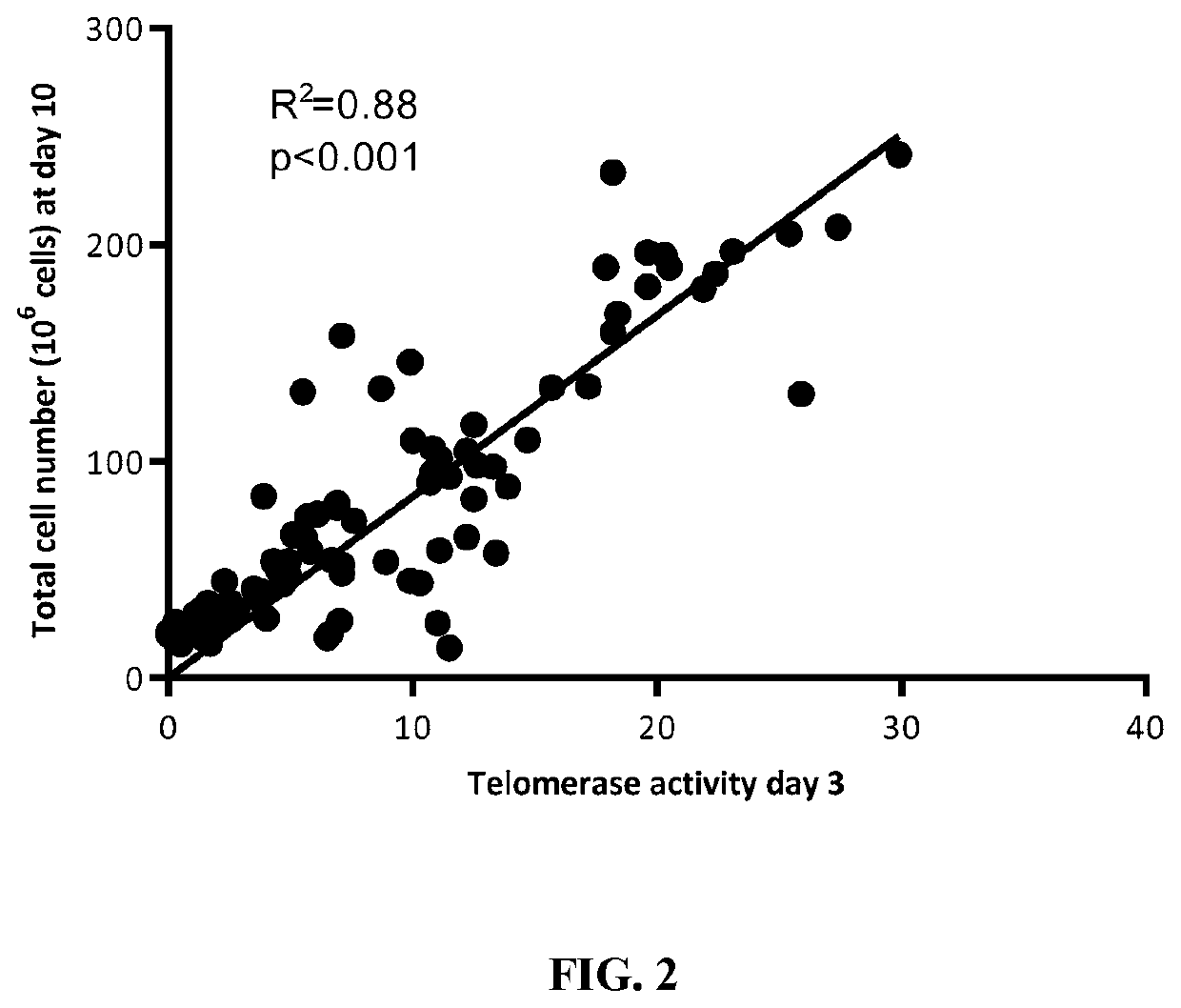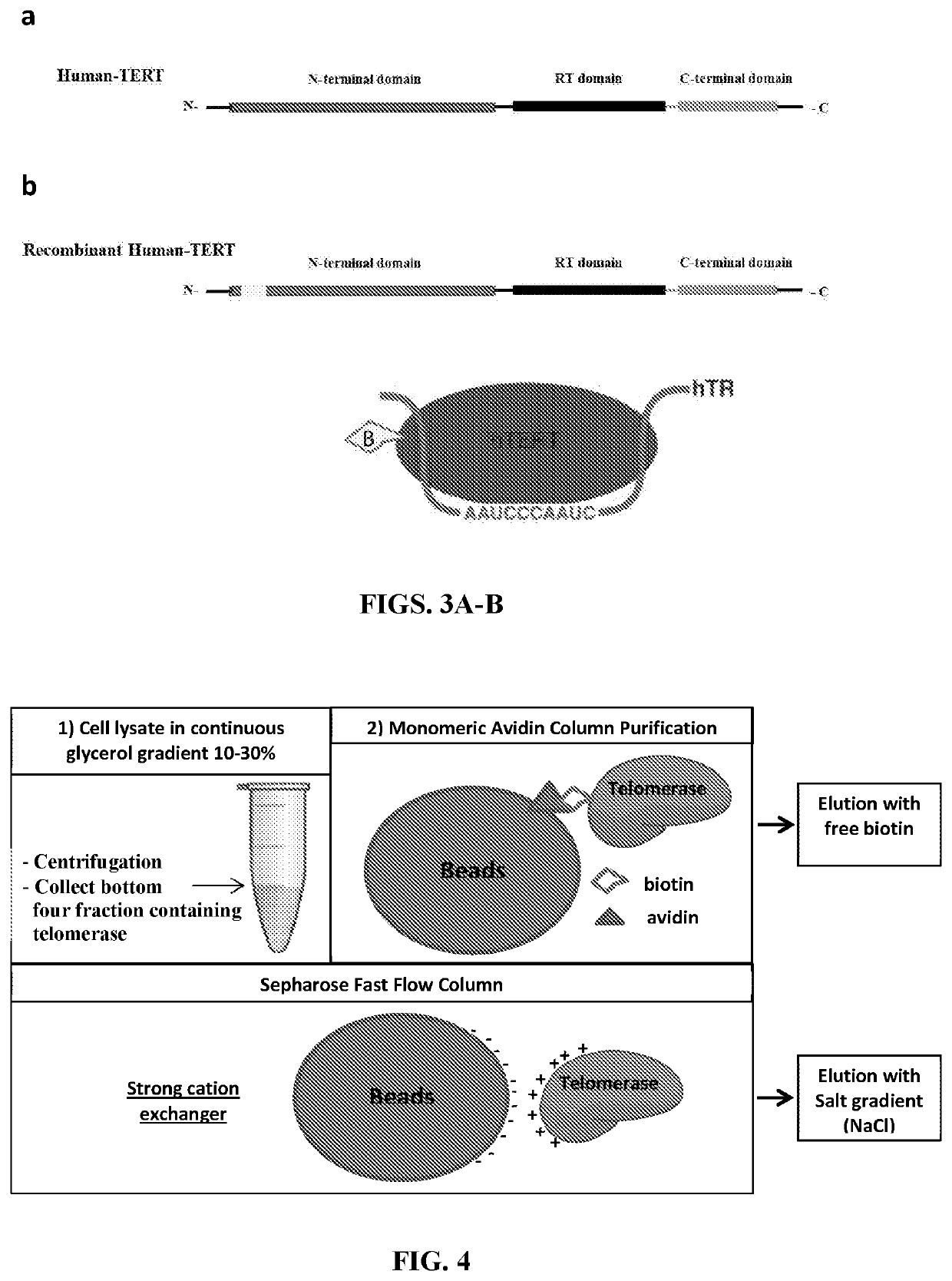Telomerase holoenzyme complex and methods of use thereof
a technology of telomerase and holoenzyme, which is applied in the field of cell biology, molecular biology, protein biology and medicine, can solve the problems of progressive loss of telomere dna, and achieve the effects of strong activity, prolonging both telomere length and cellular replicative lifespan, and prolonging the replicative lifespan of aged human cells
- Summary
- Abstract
- Description
- Claims
- Application Information
AI Technical Summary
Benefits of technology
Problems solved by technology
Method used
Image
Examples
example 1
[0089]Development and Overexpression of Recombinant Human Telomerase (hTERT+hTR) and Generation of the Stable Cell Line Super H1299. The engineered recombinant hTERT contains an in vivo biotinylation sequence, a Tev-protease cutting site, a cMyc tag before the hTERT N-terminus, adding 99 amino acid residues before the hTERT sequence. The added sequence is: MAGKAGEGEIPAPLAGTVSKILVKEGDTVKAGQTVLVLEAMKMETEINAPTDGKVE KVLVKERDAVQGGQGLIKIGVENLYFQSTMEQKLISEEDLEFT (SEQ ID NO: 45). The conserved biotinylated sequence is biotinylated at the conserved MKM site in mammalian cells. The modified hTERT plasmid and the exogenous hTR plasmid were packaged in retroviral and lentiviral vectors respectively and used to transfect and generate a stable cell line, which the inventors called Super H1299. After hygromycin selection the cells were grown and harvested on a weekly basis and used for various experiments.
[0090]Biotin tagged hTERT carried in pBabe-hygro retroviral vector was transfected into the t...
example 2
[0096]Holoenzyme production. The inventors have successfully engineered a biotin-tagged recombinant hTERT and overexpressed it along with hTR (the functional RNA component of telomerase) in human cells. They also developed a 3-step purification procedure strategy to obtain the recombinant enzyme.
[0097]The multi-step purification procedure allowed us to obtain highly enriched, catalytically active enzyme. Importantly, the employed biotin-tag (developed by us) allowed pulling down not only telomerase but the whole reconstituted holoenzyme complex containing other essential telomerase-associated proteins such as dyskerin (DKC1) and the ribonucleoprotein NOP10 and NHP2.
[0098]PBMCs. PBMCs are a heterogeneous cell population mainly consisting of T-cells, a major component of human immune responses. T-cells remain in a resting or quiescent state when unstimulated, showing little or no proliferation activity. In contrast, upon antigen-specific activation T-cells rapidly divide and exhibit d...
PUM
| Property | Measurement | Unit |
|---|---|---|
| time | aaaaa | aaaaa |
| pH | aaaaa | aaaaa |
| length | aaaaa | aaaaa |
Abstract
Description
Claims
Application Information
 Login to View More
Login to View More - R&D
- Intellectual Property
- Life Sciences
- Materials
- Tech Scout
- Unparalleled Data Quality
- Higher Quality Content
- 60% Fewer Hallucinations
Browse by: Latest US Patents, China's latest patents, Technical Efficacy Thesaurus, Application Domain, Technology Topic, Popular Technical Reports.
© 2025 PatSnap. All rights reserved.Legal|Privacy policy|Modern Slavery Act Transparency Statement|Sitemap|About US| Contact US: help@patsnap.com



